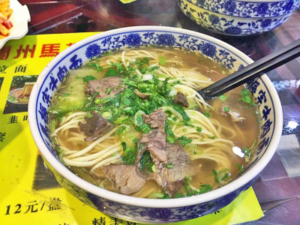This article belongs to the series “From the Middle East to the Middle Kingdom”—which is drawn from the leading ethnographic course helping Christians better understand China’s Hui Muslims.
When I was a baby, whenever I wouldn’t stop crying, my mother would say to me sternly, ‘Don’t cry anymore! If the Hezhou [Linxia] Muslims hear you, they’ll come and kill you!” —Xu Wanli 1
In part four, we saw how forced integration through marriage during the Ming Dynasty put the Muslim Hui in a delicate relationship with the majority Han Chinese. How could they live together? Hui survival necessitated some accommodation of customs, even religious syncretism. Meanwhile, identity markers like unique Hui speech patterns with Persian and Arabic loan words (回话, huihua), strengthened the Han-Hui divide.
Now we look at how ethnoreligious tension spilled over into violence, especially during the Tongzhi Hui Uprisings (1862–1873).
The Ming rulers took China back from the Mongols (1368), ruled for three centuries, then fell to another “foreign” force, this time from Manchuria: the Qing (1644). In their attempts to appease their Han subjects, the Manchus were especially discriminatory toward ethnic minorities like the Hui.
Yet, the Qing emperors struggled to maintain stable power. Major uprisings of various groups against the Qing happened frequently. In particular, the Yunnan Hui Uprisings (1775–1850) killed approximately one million people, with many Hui fleeing to neighboring regions such as Myanmar and Northern Thailand, where they are now known as Panthay (潘泰人).
Pseudo-Christian cultist Hong Xiuquan (洪秀全) led the famous Taiping Rebellion (1850–1864), which weakened the central government and served as a prelude to further unrest. When the five-year-old Manchu emperor Tongzhi ascended the throne (1861), Hui and Han peasants coexisted uneasily throughout the entire northwestern region of China. But Hui history’s most deadly decade was just one botched business deal away.
A petty dispute over bamboo ignited the Tongzhi Hui Uprisings (1862–1873). The Han seller’s father, instead of rebuking his son for asking too low a price, accused the Hui buyer of stealing. Violence ensued between the two ethnic groups and spread throughout Shaanxi. Intervention by the local Qing governor only spurred more Hui to defend their own. The Hui regrouped under Bai Yanhu’s (白彦虎) and other Hui leaders, and for 11 years, the Hui attempted to build strongholds near modern-day Wuzhong, Linxia, and Xining. Yet, despite their weakened state, the Qing still possessed superior weapons and, after several Hui leaders defected to the Qing, the rebellion was effectively quashed. Up to 15 million Han and 5 million Hui were dead (though estimates vary). Whole villages were massacred, including women and children. Shaanxi’s Hui population was gutted to less than 15% of what it was. Displaced Hui peasants’ only option was to settle in the remote, arid regions of Gansu and today’s Ningxia.
For some, Bai Yanhu is commemorated as an ethnic hero, despite his role in the deaths of millions. He was 26 years old when he was chosen to lead the Hui army. After 11 years of fighting, constantly being pushed West, his soldiers retreated to Imperial Russia, Kazakhstan, and Kyrgyzstan. Their descendants are today’s Dungan People (东干, Donggan or Tungan). In West Asia, traditional Dungan dress is strikingly Qing in style.
A small enclave of Muslims living in Xi’an’s Hui Quarter opted out of the fighting. They live in peace to this day, introverted and separate from “outside Hui.” They have retained their property in central Xi’an, where they have become wealthy selling ethnic foods and souvenirs.
Two points of application: Firstly, there are recent, historical reasons for the tensions we see between Hui and Han people. Just over one century ago, Han-Hui relations were at their all-time low. For years to come, both Hui and Han mothers mythologized the other as boogeymen to scare their disobedient children. It would be naïve to assume anything—even something as good as the gospel of Jesus Christ—could be easily shared from one group to the other. We need healing, reconciliation, and time to forgive.
Secondly, the Hui are not a homogenous group. They never were. Throughout the turmoil of the Qing period, the Hui consisted of fragmented subgroups with their own interests and aspirations. The events in Yunnan and Shaanxi—and others not mentioned here—were relatively localized and separate affairs. Religion played a role in the Hui Uprisings, but race and class were key factors as well. When building relationships with Hui people, their own family stories, local history, and personal allegiances can often be more important than broad doctrines of Islam, nationalism, or race. A bottom-up, ethnographic method of missiological research is preferable, rather than imposing our assumptions about so-called “orthodox Islam” on the Hui.
As for those Hui defectors? They served the Qing until the dynasty’s collapse. Then they stepped into the subsequent power vacuum and became warlords of China’s Republican Era.
Endnotes
Image credit: Qingkuan, Public domain, via Wikimedia Commons.

Julie Ma
Julie Ma (pseudonym) is a graduate of Sydney Missionary and Bible College (SMBC) and a member of the Angelina Noble Centre for women in cross-cultural missions research. She left her home in Australia over a decade ago to serve Hui Chinese Muslims alongside her Chinese husband. After all these years overseas, …View Full Bio
Are you enjoying a cup of good coffee or fragrant tea while reading the latest ChinaSource post? Consider donating the cost of that “cuppa” to support our content so we can continue to serve you with the latest on Christianity in China.